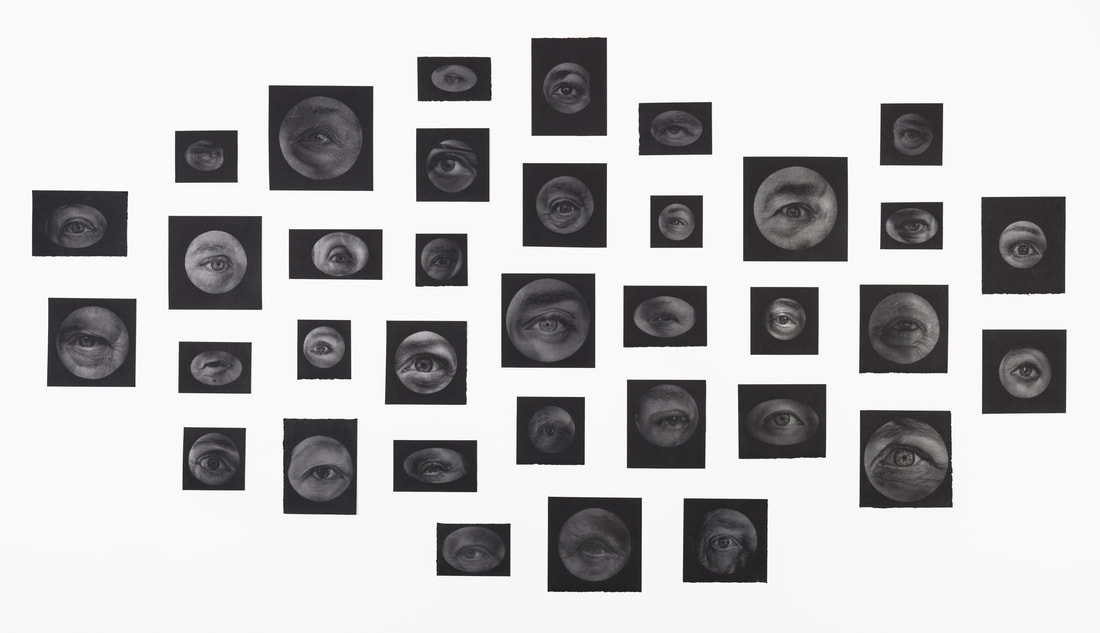42 is a multi-part self portrait via life review. Using the format of the 18th century “lover’s eye” miniature, I drew the eyes of forty-one people who have been significant in my life while they were thinking about me. Each eye reflects the nature of that relationship: the good, the bad, the love, the regrets, and the shame. Drawing the eyes forced me to examine my part in what happened and acknowledge how those relationships have made me who I am. As a group, they create the forty-second person: me. I used graphite on black paper to mimic the dusky view of a Claude glass, the black mirror used by artists to view the landscape, as a way of imagining a deathbed experience. The reflective quality of the graphite means that the drawings can be quite bright or ghostly and almost invisible depending on the light source.
